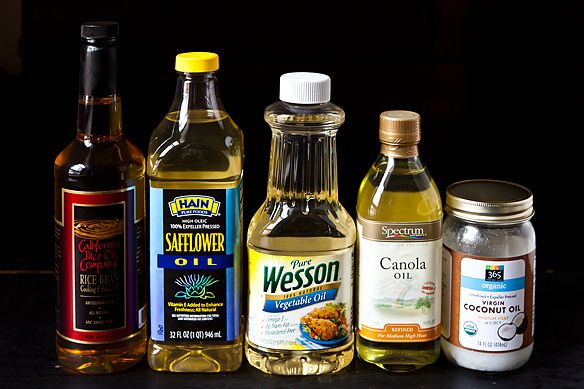- Empty cart.
- Continue Shopping
How to Choose the Right Cooking Oils

Cooking oils play a central role in our culinary adventures, but with so many options available, it can be challenging to choose the right one for your specific cooking needs. The choice of cooking oil can impact the flavor, texture, and healthiness of your dishes.
Consider the Smoke Point
The smoke point of an oil is the temperature at which it begins to smoke and break down. Cooking oil should ideally be used below its smoke point to avoid generating harmful compounds and unpleasant flavors. Here are some common cooking oils and their approximate smoke points:
- High Smoke Point Oils (suitable for high-heat cooking):
- Canola Oil: Smoke point around 400°F (204°C).
- Safflower Oil: Smoke point around 450°F (232°C).
- Peanut Oil: Smoke point around 450°F (232°C).
- Grapeseed Oil: Smoke point around 420°F (216°C).
- Sunflower Oil: Smoke point around 440°F (227°C).
- Medium-High Smoke Point Oils (suitable for sautéing and stir-frying):
- Vegetable Oil: Smoke point around 375-400°F (190-204°C).
- Corn Oil: Smoke point around 450°F (232°C).
- Extra Light Olive Oil: Smoke point around 410°F (210°C).
- Medium Smoke Point Oils (suitable for light sautéing and baking):
- Olive Oil: Smoke point varies depending on the type; extra virgin has a lower smoke point (around 320-375°F or 160-190°C), while regular or light olive oil has a higher smoke point (around 390-465°F or 199-240°C).
- Coconut Oil: Smoke point around 350°F (177°C) for unrefined and 450°F (232°C) for refined.
- Low Smoke Point Oils (suitable for salad dressings and low-heat cooking):
- Flaxseed Oil: Smoke point around 225°F (107°C).
- Walnut Oil: Smoke point around 320°F (160°C).
- Sesame Oil: Smoke point around 350-410°F (177-210°C), depending on the type (toasted or untoasted).
Consider Flavor
The flavor of the cooking oil can significantly influence the taste of your dishes. Some oils have a mild, neutral flavor, while others have distinct tastes. Here’s a quick overview:
- Neutral Oils: Oils like canola, safflower, and vegetable oil have a neutral flavor and are suitable for dishes where you don’t want the oil to overpower the other ingredients.
- Olive Oil: Olive oil has a characteristic fruity flavor. Extra virgin olive oil has a stronger taste, making it great for salad dressings and drizzling over finished dishes. Regular or light olive oil has a milder flavor and can be used for cooking.
- Coconut Oil: Coconut oil imparts a mild coconut flavor to dishes. It’s often used in tropical and Asian cuisines.
- Sesame Oil: Toasted sesame oil has a rich, nutty flavor and is often used as a finishing oil for Asian dishes. Untoasted sesame oil has a milder taste and is suitable for cooking.
Consider Nutritional Profile
Different cooking oils have varying nutritional profiles, and your choice can impact the healthiness of your meals. Here are some factors to consider:
- Saturated Fat: Oils like coconut oil and palm oil are high in saturated fats, which should be consumed in moderation to maintain heart health.
- Monounsaturated Fat: Olive oil is a good source of monounsaturated fats, which are considered heart-healthy.
- Polyunsaturated Fat: Oils like safflower, sunflower, and soybean oil are rich in polyunsaturated fats, including omega-6 fatty acids. While these fats are essential, excessive consumption may imbalance the omega-3 to omega-6 ratio in your diet, so use them in moderation.
- Omega-3 Fatty Acids: Flaxseed oil and walnut oil are excellent sources of omega-3 fatty acids, which have various health benefits.
- Trans Fat: Avoid oils that contain trans fats, as they are associated with increased risk of heart disease. Read labels carefully, as some partially hydrogenated oils may contain trans fats.
Special Considerations
- Allergies: Be mindful of allergies. For example, if you or someone you’re cooking for has a nut allergy, avoid using peanut oil.
- Health Goals: Consider your health goals. If you’re trying to reduce your saturated fat intake, choose oils lower in saturated fats, such as canola or olive oil.
- Cultural and Culinary Preferences: Your choice of cooking oil may also be influenced by cultural and culinary preferences. Certain cuisines traditionally use specific oils for authentic flavors.
In Conclusion, Choosing the right cooking oil is essential for creating delicious and healthy meals. Consider factors like smoke point, flavor, and nutritional profile to select the best oil for your specific cooking needs. By making informed choices, you can enhance the taste of your dishes while promoting your overall health and well-being.








